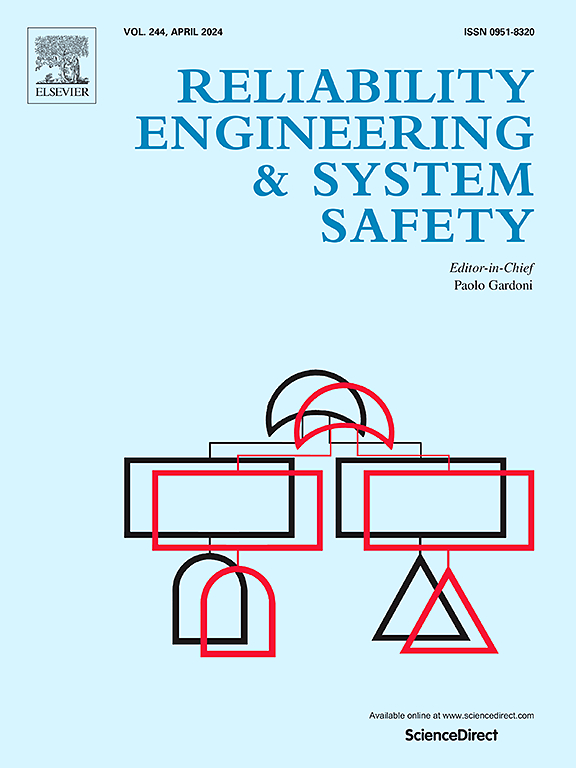Enhancing procedure quality: Advanced language tools for identifying ambiguity and high-potential violation triggers
IF 9.4
1区 工程技术
Q1 ENGINEERING, INDUSTRIAL
引用次数: 0
Abstract
In high-risk industrial environments, the clarity and accuracy of Standard Operating Procedures (SOPs) are critical for ensuring safety and regulatory compliance. The presence of ambiguities in SOPs can lead to misunderstandings, errors, and increased risks. While violations of procedural directives can significantly contribute to catastrophic outcomes. This study introduces the development of sophisticated tools utilizing both rule-based and machine learning methodologies in Natural Language Processing (NLP) specifically designed to detect ambiguities and identify high-risk steps prone to non-malevolent violation in procedural documentation. By addressing these linguistic and procedural discrepancies, we aim to enhance the clarity and applicability of SOPs, ultimately improving adherence and reducing risks in complex operational settings. The tools leverages a blend of linguistic rules to systematically identify and categorize ambiguities, and machine learning techniques with historical data to identify procedural directives with high-risk potential when violated. This enhances the precision and practical application of SOPs in sectors such as nuclear, oil and gas, and chemical processing. Initial tests demonstrate the tools’ effectiveness and promising applicability. This approach not only aids in refining SOPs but also contributes to the broader objective of enhancing operational safety and efficiency. The research underscores the importance of integrating advanced NLP techniques with traditional safety management practices to address the inherent challenges of procedural documentation in complex industrial settings.
提高程序质量:用于识别歧义和高潜在违例触发器的高级语言工具
在高风险的工业环境中,标准操作程序(sop)的清晰度和准确性对于确保安全性和法规遵从性至关重要。sop中含糊不清的存在会导致误解、错误和增加风险。而违反程序指令可能会严重导致灾难性后果。本研究介绍了利用自然语言处理(NLP)中基于规则和机器学习方法的复杂工具的开发,专门用于检测程序文档中的歧义并识别容易发生非恶意违规的高风险步骤。通过解决这些语言和程序上的差异,我们的目标是提高标准操作程序的清晰度和适用性,最终提高遵守性并降低复杂操作环境中的风险。这些工具利用语言规则的混合来系统地识别和分类歧义,并利用历史数据的机器学习技术来识别违反时具有高风险潜力的程序指令。这提高了标准操作程序在核、石油和天然气以及化学加工等部门的精度和实际应用。初步测试证明了该工具的有效性和良好的适用性。这种方法不仅有助于完善sop,而且有助于提高操作安全性和效率的更广泛目标。该研究强调了将先进的NLP技术与传统的安全管理实践相结合的重要性,以解决复杂工业环境中程序性文档的固有挑战。
本文章由计算机程序翻译,如有差异,请以英文原文为准。
求助全文
约1分钟内获得全文
求助全文
来源期刊

Reliability Engineering & System Safety
管理科学-工程:工业
CiteScore
15.20
自引率
39.50%
发文量
621
审稿时长
67 days
期刊介绍:
Elsevier publishes Reliability Engineering & System Safety in association with the European Safety and Reliability Association and the Safety Engineering and Risk Analysis Division. The international journal is devoted to developing and applying methods to enhance the safety and reliability of complex technological systems, like nuclear power plants, chemical plants, hazardous waste facilities, space systems, offshore and maritime systems, transportation systems, constructed infrastructure, and manufacturing plants. The journal normally publishes only articles that involve the analysis of substantive problems related to the reliability of complex systems or present techniques and/or theoretical results that have a discernable relationship to the solution of such problems. An important aim is to balance academic material and practical applications.
 求助内容:
求助内容: 应助结果提醒方式:
应助结果提醒方式:


